Field notes from the Taita Forests, Kenya
The Taita Hills, located in southeastern Kenya, comprise several mountain chains that rise dramatically from the savannah lowlands up to 2,228 m above sea level. It’s an amazing biodiversity hotspot.
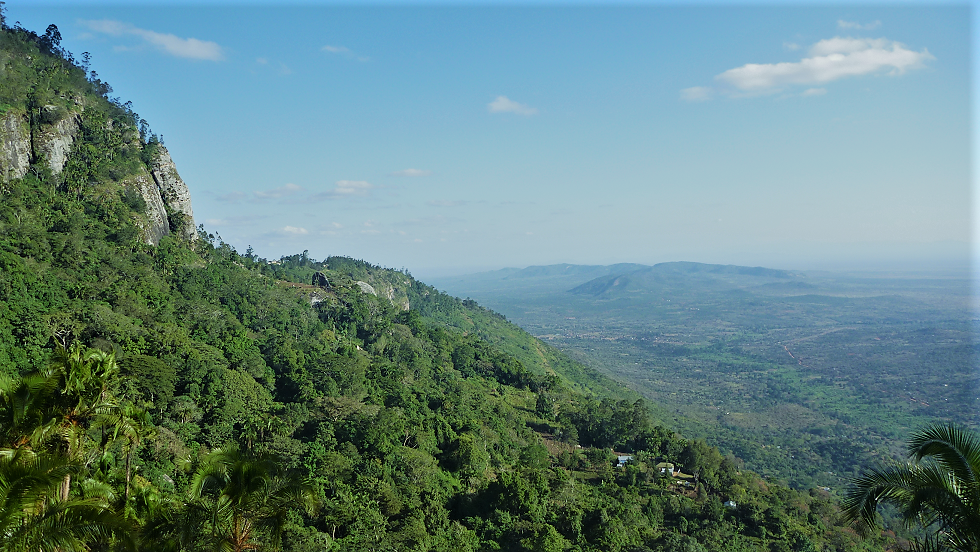
The Hills are home to many endemic plant and animal species that cannot be found anywhere else in Kenya or indeed the world. Once covered by cloud forests, most of the Taita Hills are dominated by subsistence farmlands today.


Substantial parts of the remaining forest cover consist of eucalyptus, pine and cypress plantations. One big question for nature conservationists is how much of the unique biodiversity can be maintained in the Taita Hills as land use change continues. Another big question is how to deal with the existing tree plantations that might offer potential for restoring some of the indigenous forest vegetation. This is what I had in mind when we set out for a field research mission to the Taita Hills organized by the DAAD Quality Network “Reconciling human livelihood needs and nature conservation”.
Reconciling human livelihood needs and nature conservation
The Quality Network runs from 2016-2019 and brings together students and scientists from Germany and Kenya. We study species diversity, land use change and local conservation perspectives in different forest biodiversity hotspots of Kenya. The trip to the Taita Hills was the third of three field missions that also took us to gallery forest remnants close to Kitui in 2016 and to the coastal Arabuko Sokoke Forest in 2017. The overall goals of the project are to build capacity in German and Kenyan students for conducting and analyzing biodiversity studies, to gain insights into nature conservation conflicts and to promote exchange with the various actors involved in nature conservation in Kenya.
Following an inception workshop at the Taita Taveta University (TTU) in Voi, we moved to the TTU Ngerenyi Campus on 02 August 2018 with a group of 11 scientists, 20 students and 3 taxonomic experts from the National Museums of Kenya (NMK). The Ngerenyi Campus is located right in the Taita Hills at around 1,600 m, frankly speaking in the middle of nowhere, with a 30 minute bumpy road trip to the town of Wundanyi.

We comfortably settled into the TTU guest houses and enjoyed breakfast and dinner at the University cafeteria that served a variety of tasty local dishes with many vegetarian options. Greens, chapattis and a mix of mashed beans, plantains and potatoes were among my favorites. They also provided us with lots of hot and milky tea which helped to alleviate the cold a bit; night temperatures were as low as 10°C and during the day we often had no more than a moist 22°C, and this while temperatures in Germany reached close to 40°C!
Tree diversity assessment
I was leading the Vegetation Ecology Group (for the other groups check out the project’s website), with the aim to study the tree diversity of the Fururu and Chawia forest fragments located within reach of our base at the Ngerenyi Campus. We also aimed to assess the tree diversity on the adjacent agricultural lands. Our group was made up of myself, landscape ecologist, Dr. Peter Borchardt, nursery expert with lots of expertise from Ethiopia, Mathias Muindi, taxonomist at NMK, and Sylvia Mwelu and Delphina Dali, two Kenyan students.
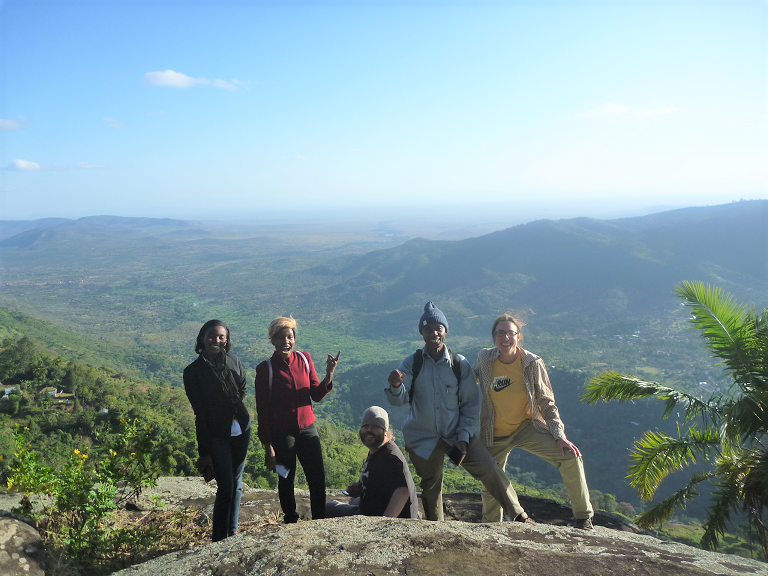

We worked with a plot-based method establishing 20m x 20m plots in the forest and 10m x 50m transects on the agricultural lands where we identified and measured all woody individuals with a certain size (5 cm diameter at breast height for those who want to know the details) .
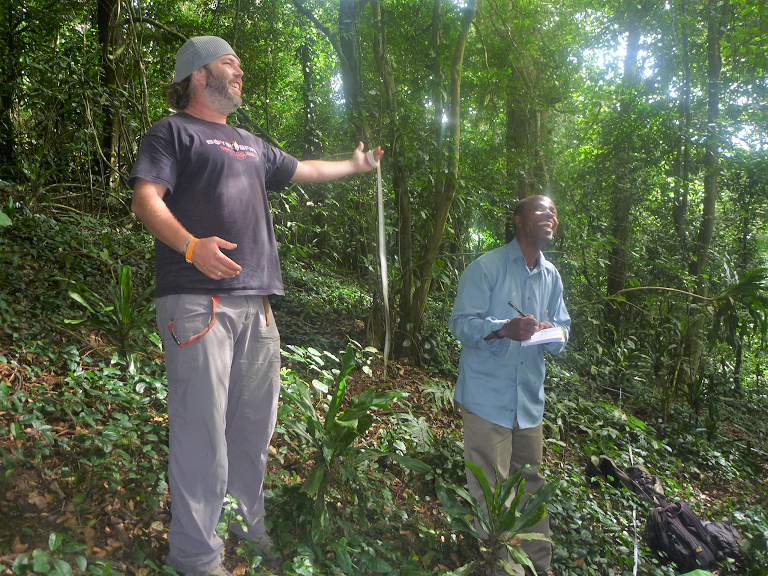
We also used one day for interviews with experts from the Kenya Forestry Research Institute (KEFRI) and Kenya Forest Service (KFS), responsible for forest research and management, respectively, in the region.
Exotic species dominate large areas
The Chawia and Fururu forests we studied belong to those forest fragments in the Taita Hills that have been heavily affected by human management activities. While some of the indigenous forest vegetation remains, much of the area was turned into eucalyptus, pine and cypress plantations starting in the early 1970s. We encountered some huge eucalyptus trees.
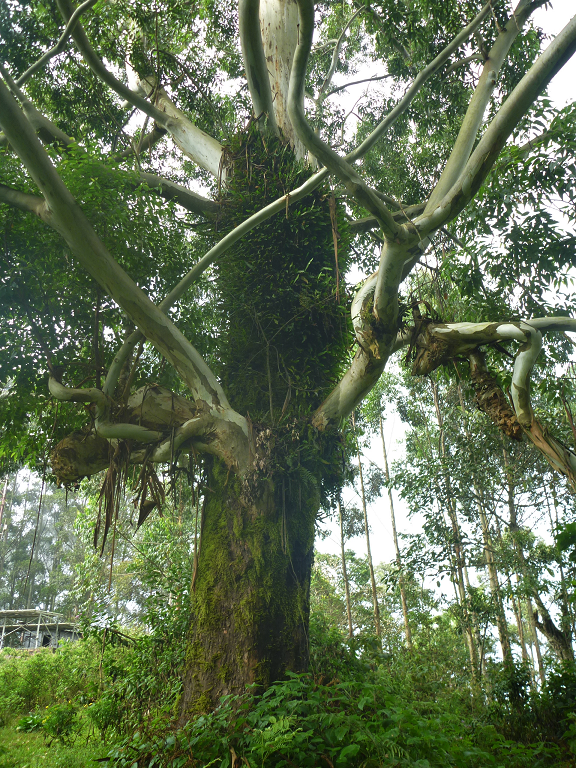
Some of the eucalyptus plantations have started turning into whole novel ecosystems with spontaneous regeneration of the invasive black wattle (Acacia mearnsii).
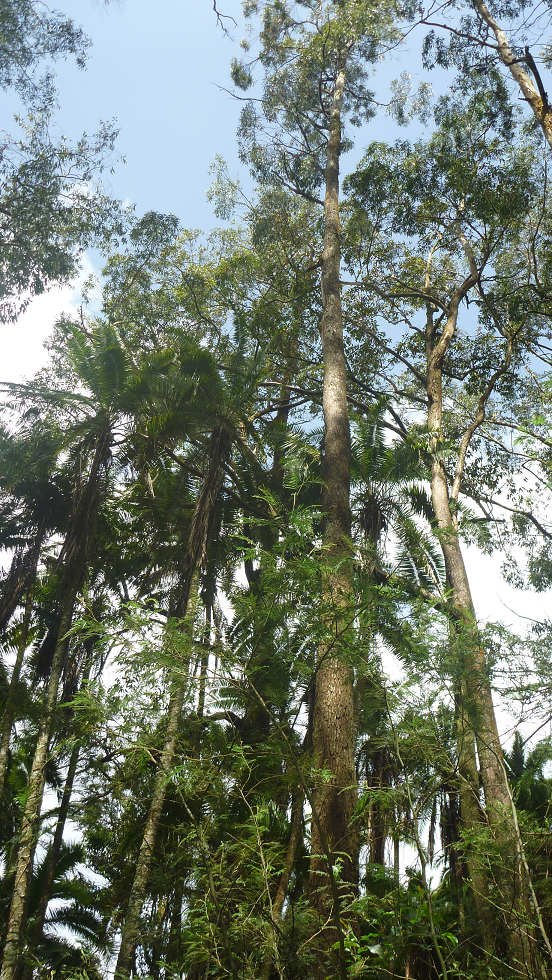
Yet again, other forest areas had a primary forest structure with a closed canopy composed of indigenous trees such as Albizia gummifera, Newtonia buchananii and Syzygium guineense. Also, we encountered tree ferns in moist valleys.

In the agricultural lands, indigenous tree species were really in the minority because farmers are keen to plant quick growing exotic species, e.g., grevillea (Grevillea robusta), in woodlots and along the borders of their land.
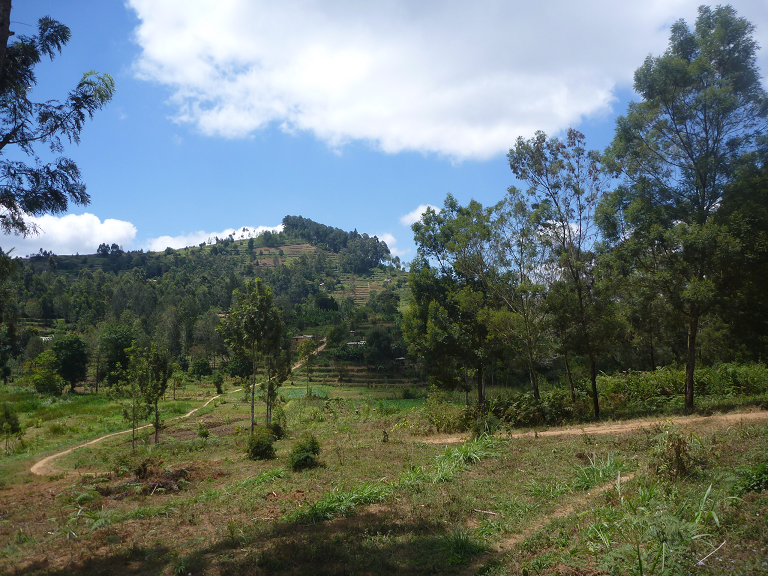
Our visits to KEFRI and KFS revealed that their nurseries cater primarily to the demand of local farmers for exotic species. This makes sense from an economic perspective, but the ecological implications of an agricultural landscape dominated by exotic tree species are not yet fully understood.
What does the future hold for forests in the Taita Hills?
What should happen with the old-growth Eucalyptus stands which were planted around 40 to 50 years ago as a replacement for logged or degraded indigenous forest? One way forward would be to harvest the eucalyptus, and restore the area with indigenous tree species. However, this poses technical challenges, especially on steep slopes. Heavy machinery would be required that may destroy top soils and inflict erosion. Besides, there are challenges related to forest governance. Some of the Taita forests are owned by the Federal Government and managed by KFS, while others are under the management of County Governments and Community Forest Associations. Our brief interviews with different experts revealed that conflicts around the sharing of benefits from harvesting eucalyptus plantations have created somewhat of a standstill. This is further complicated by the current National Logging Ban that forbids the felling of any trees in the forest – be it indigenous or exotic.
Meanwhile, there are also positive developments. For instance, Nature Kenya and partners were granted permission by KFS to convert exotic plantation patches into natural forest. This will contribute to securing habitat for the endemic Taita apalis and other forest dependent plant and animal species. There is also growing awareness among local experts and communities that land use change and the excessive planting of eucalyptus might have contributed to the drying up of natural springs in the Taita Hills. Overall, the situation remains challenging. Stakeholders from governmental, non-governmental and civil society organizations must collaborate closely and have the cunning to develop and implement land management plans that accommodate for two often conflicting interests – creating space for the restoration and conservation of indigenous forests and creating space for a growing population in need of agricultural land and wood resources.
Christine B. Schmitt is a senior researcher at ZEF working on the interlinkages between biodiversity conservation, climate change mitigation and food security. https://www.zef.de/index.php?id=2232&tx_zefportal_staff[ref]=2252&tx_zefportal_staff[uid]=548&no_cache=1
Photo credit: Christine B. Schmitt


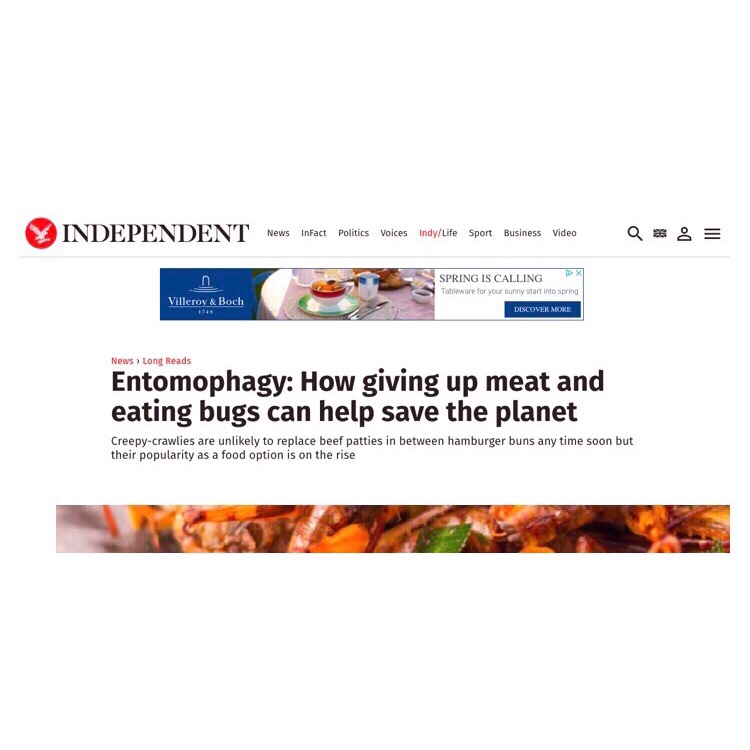

 Here is a link to Charlotte LR Payne’s blog http://www.libertyruth.com/blog/an-article-for-the-independent-and-a-list-of-great-blogs
Here is a link to Charlotte LR Payne’s blog http://www.libertyruth.com/blog/an-article-for-the-independent-and-a-list-of-great-blogs

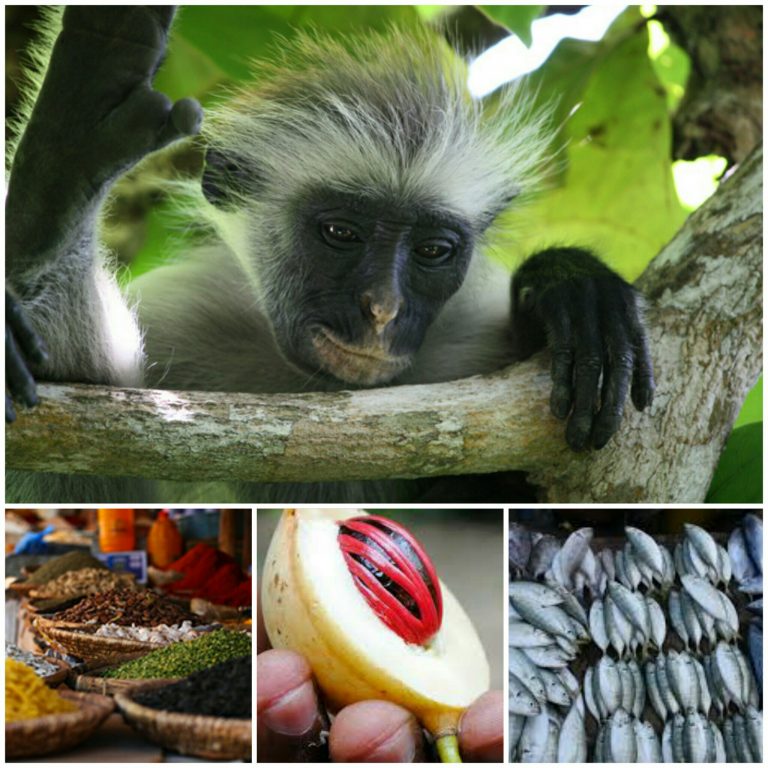

 Click here for a full view of the EntoNation post on Marwa Shumo The EntoNation article Some info about Ento Nation: Your online resource for all things Ento. Bringing the benefits of bugs to people and planet. If you love bugs,…
Click here for a full view of the EntoNation post on Marwa Shumo The EntoNation article Some info about Ento Nation: Your online resource for all things Ento. Bringing the benefits of bugs to people and planet. If you love bugs,…
This is nice. I have visited Taita hills and it is a beautiful place. Research on how humans interact with the beautiful landscape and the environment is heartwarming.
Thank you for sharing this information about Taita forests.Personally I am from the same area and most of taita forests for sure are dominated with exotic species than the indigenous species and this is as result of people from the area have been mostly encouraged to grow this plants for economic use that is why when you visited the area in most places you found this exotic species .This calls for public participation and awareness that something needs to be done for the restoration of Taita forests.
This calls for public participation and stronger stakeholder involvement in biodiversity conservation who can come up with the best options for the restoration of the Taita Hills forest which is needed. This can be achieved through increase of the size and quality of the isolated forest patches and of the amount of indigenous forest area in the landscape by planting trees and changing the exotic plantations to indigenous forest.
Very nice, thanks for sharing your work and insights. I am a forest restoration practitioner in the USA, and have been casually studying these forests, and will be visiting Taita Hills, and a few forests in Tanzania next month.